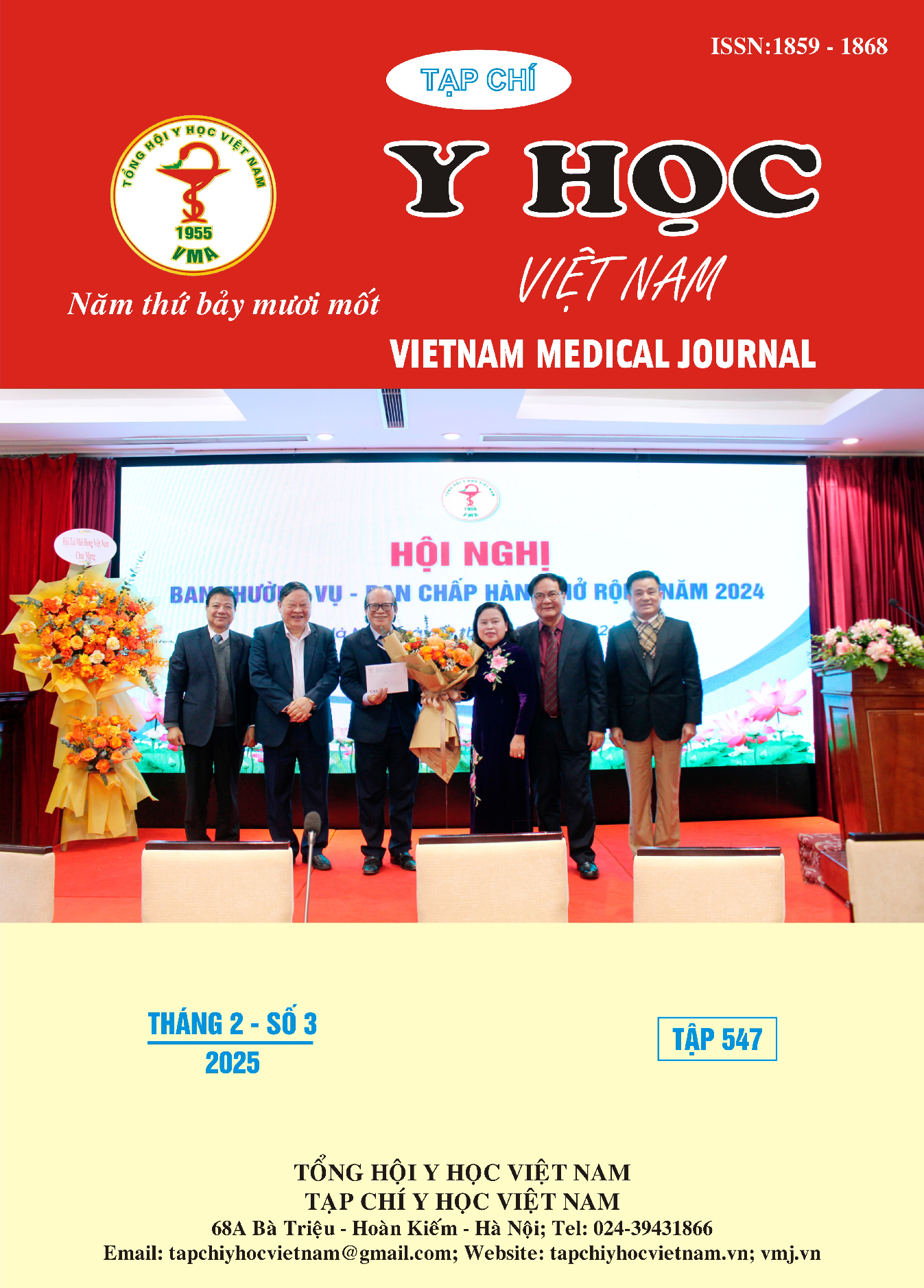BOLTON TOOTH SIZE RATIO AMONG DIFFERENT MALOCCLUSION GROUPS IN VIETNAMESE ADULT
Main Article Content
Abstract
Objective: This study aims to evaluate variations in tooth size ratios based on gender, across different malocclusion groups, and to quantify the prevalence of tooth size discrepancy in orthodontic patients. Subjects and Methods: A cross-sectional analysis was conducted on 146 dental casts selected from a pool of nearly 4000 pre-treatment orthodontic patients (39 males, 107 females). The samples were classified according to Angle’s classification into Class I malocclusion (86 samples) and Class III malocclusion (60 samples). Tooth size measurements were performed using an electronic caliper, and the ratios were calculated based on Bolton’s analysis. Results: The findings revealed no statistically significant differences in anterior and overall tooth size ratios between males and females within both malocclusion groups (p>0.05). Likewise, no significant differences were observed between Class I and Class III groups (p>0.05). However, the prevalence of tooth size discrepancy was notably higher in malocclusion groups compared to normal occlusion, with rates of 11.63% for Class I, 8.34% for Class III, and 10.27% for the entire sample. Conclusion: While no significant differences were identified between genders or malocclusion groups, the presence of tooth size discrepancy among malocclusion cases highlights the importance of incorporating Bolton analysis as a routine component of orthodontic diagnosis and treatment planning.
Article Details
Keywords
Bolton’s ratio, Tooth size discrepancy, Anterior ration, Overall ratio
References
2. Yến N. T. H., Lâm T. H. , Tỉ số kích thước răng ở người Việt có khớp cắn bình thường, Tạp chí Y học Thành phố Hồ Chí Minh, 2014, 18(2):85.
3. Alshahrani AA, Alshahrani I, Addas MK, Shaik S, Binhomran FM, AlQahtani J., The Tooth Size Discrepancy among Orthodontic Patients and Normal Occlusion Individuals from Saudi Arabia: A Three-Dimensional Scan Analysis of Diagnostic Casts. Contemp Clin Dent. 2020 Apr-Jun; 11(2):141-149.
4. Bolton Wayne A, Disharmony In Tooth Size And Its Relation To The Analysis And Treatment Of Malocclusion, The Angle Orthodontist, 1958, 28 (3), pp.113-130.
5. Mishra RK, Kafle D, Gupta R. Analysis of Interarch Tooth Size Relationship in Nepalese Subjects with Normal Occlusion and Malocclusions. Int J Dent. 2019
6. Mollabashi V, Soltani MK, Moslemian N, Akhlaghian M, Akbarzadeh M, Samavat H, Abolvardi M. Comparison of Bolton ratio in normal occlusion and different malocclusion groups in Iranian population. Int Orthod. 2019 Mar;17(1):143-150.
7. Shastri D, Singh A, Tandon P. Bolton ratio in a North Indian population with different malocclusions. J Orthod Sci. 2015 Jul-Sep; 4(3):83-5.
8. Smith SS, Buschang PH, Watanabe E. Interarch tooth size relationships of 3 populations: "does Bolton's analysis apply?". Am J Orthod Dentofacial Orthop. 2000 Feb;117(2):169-74.


